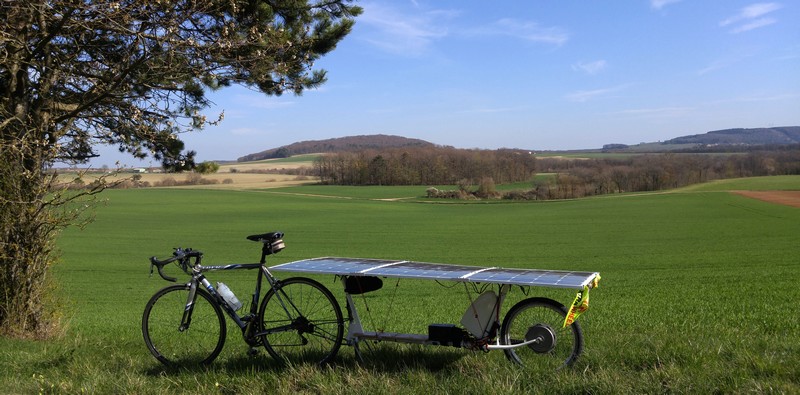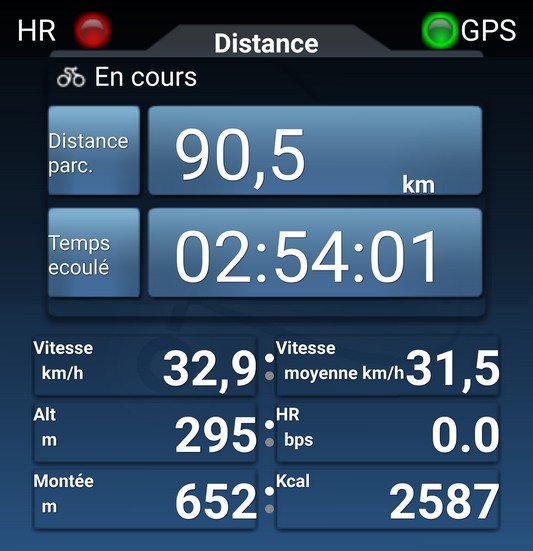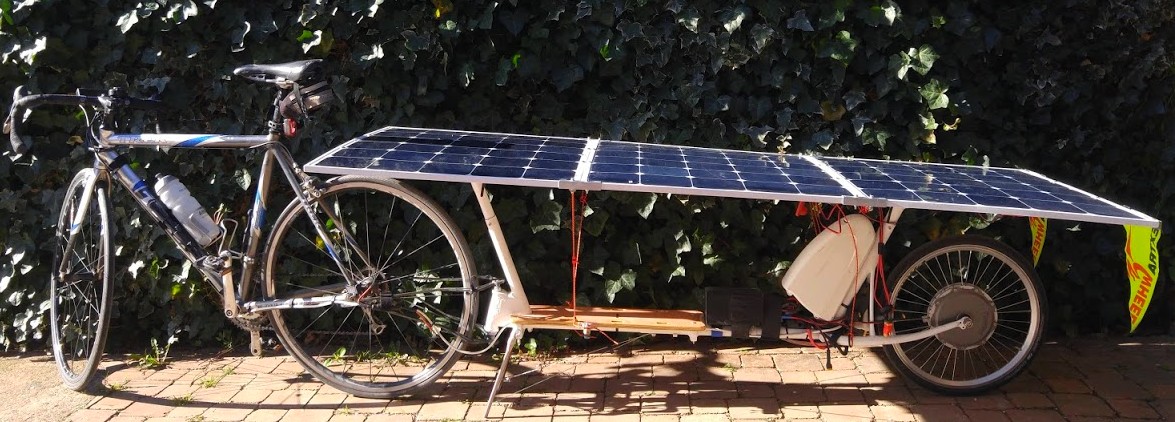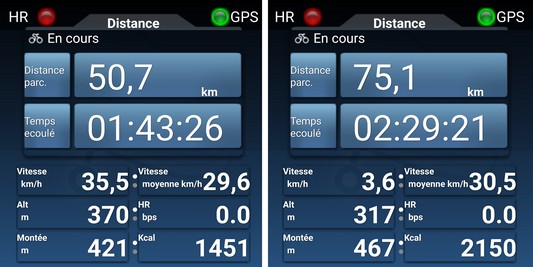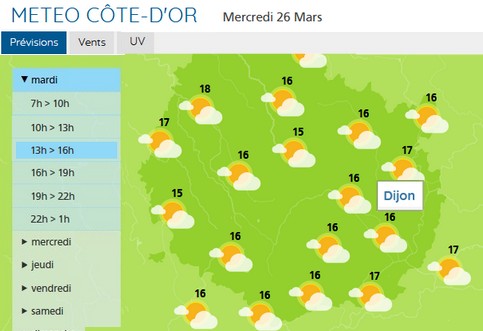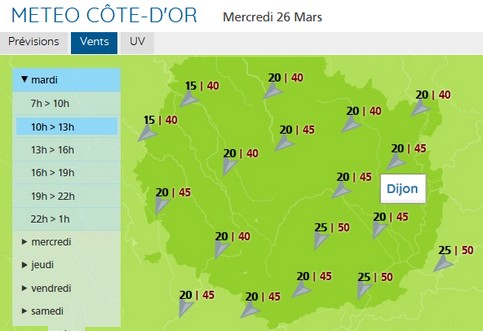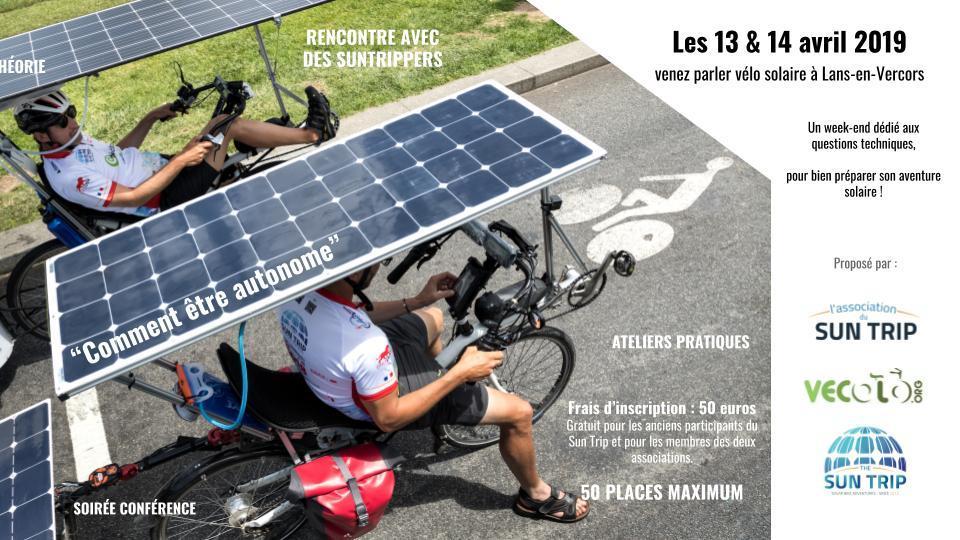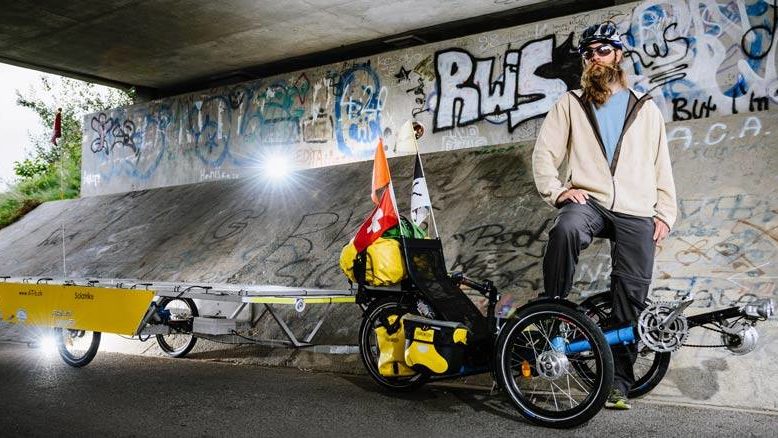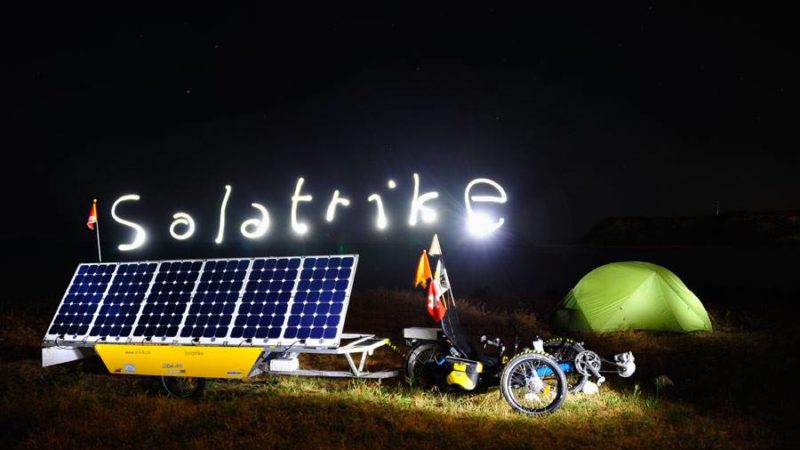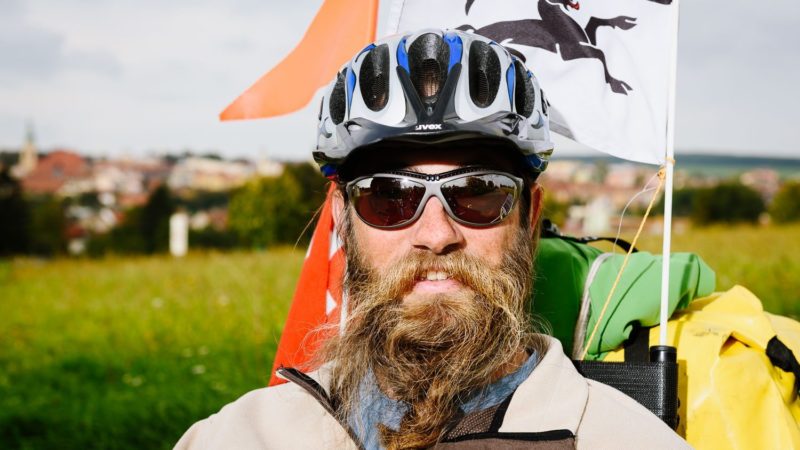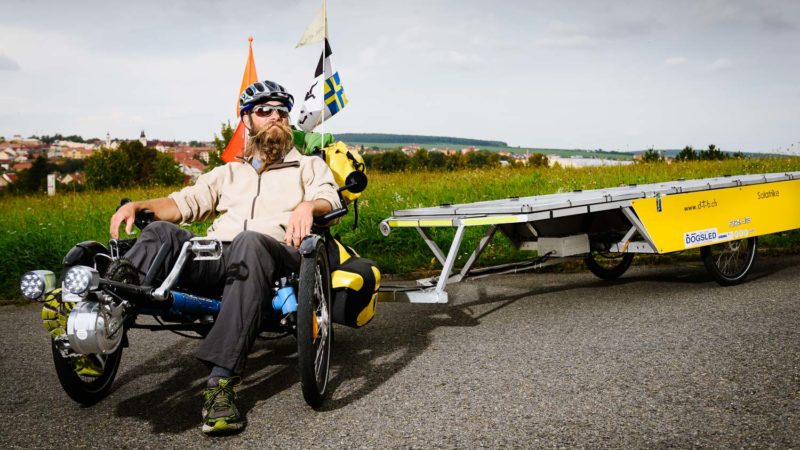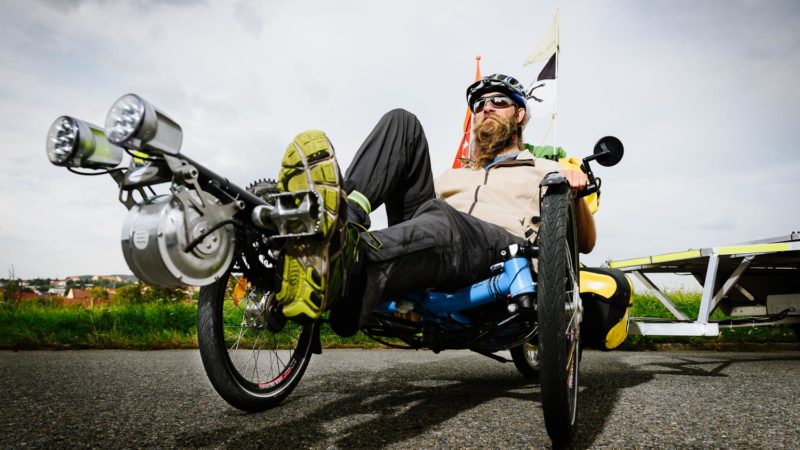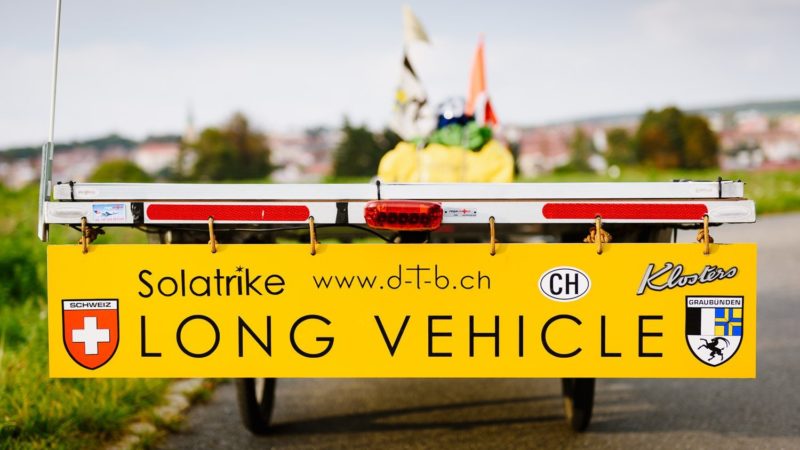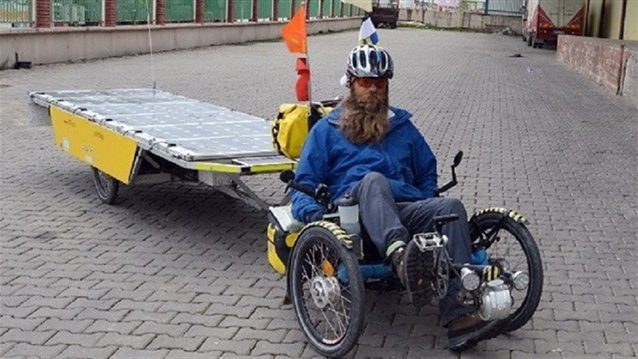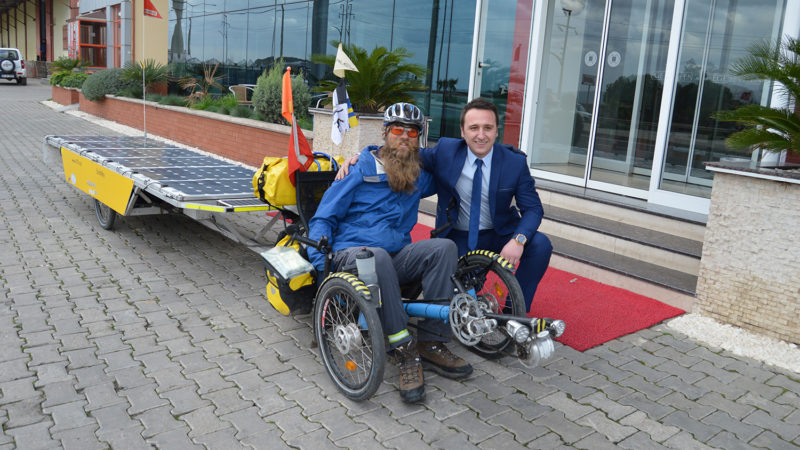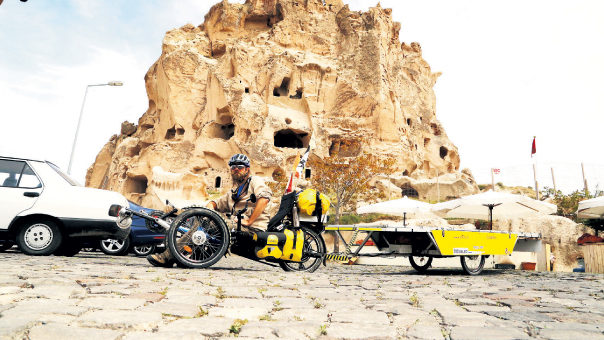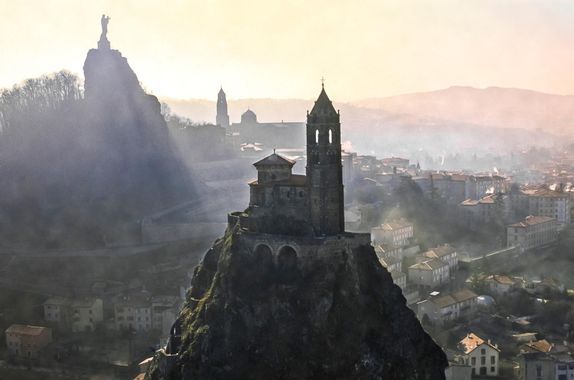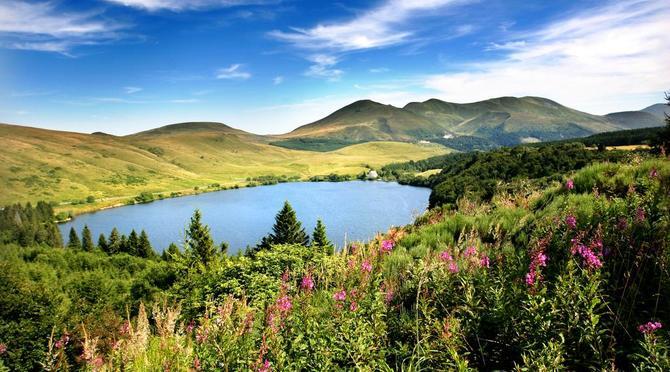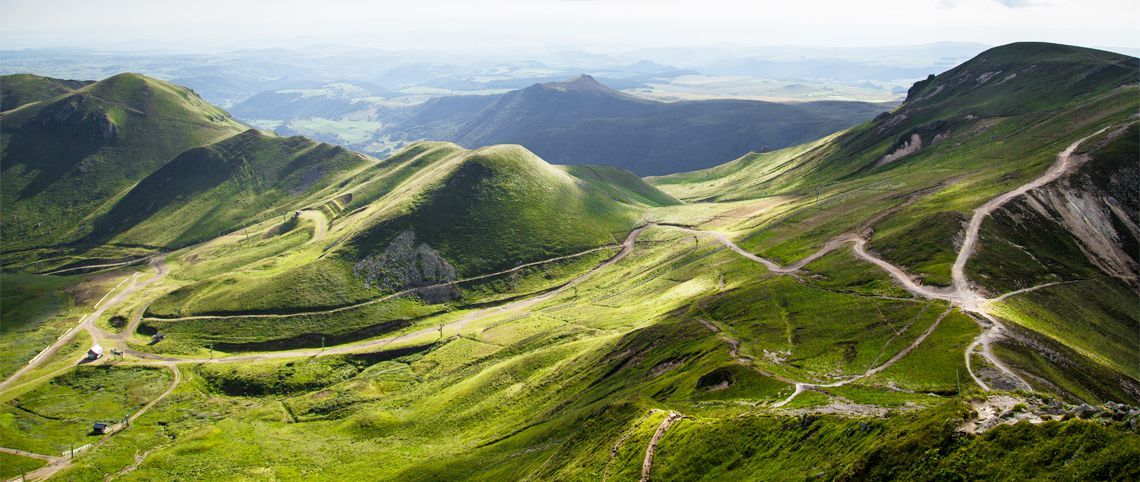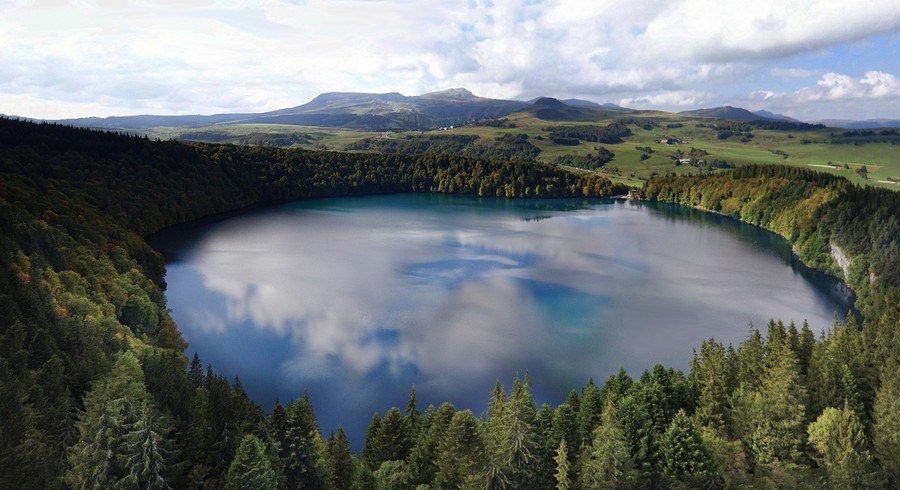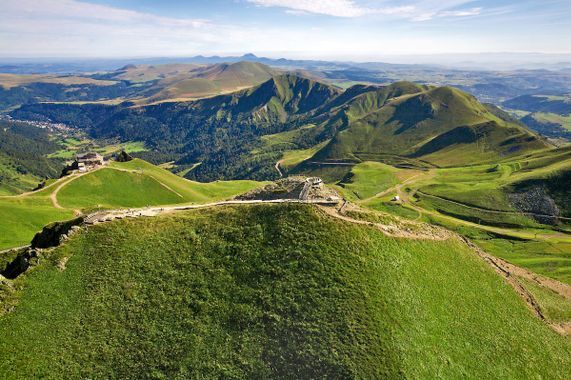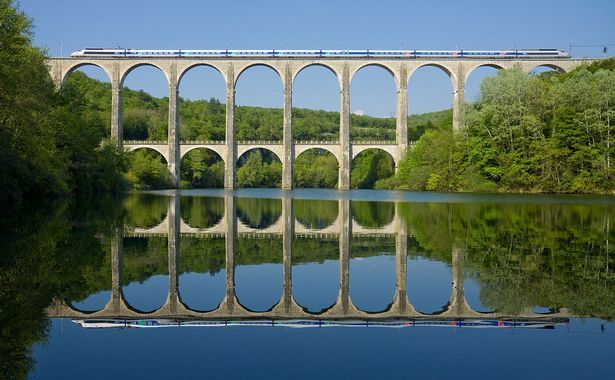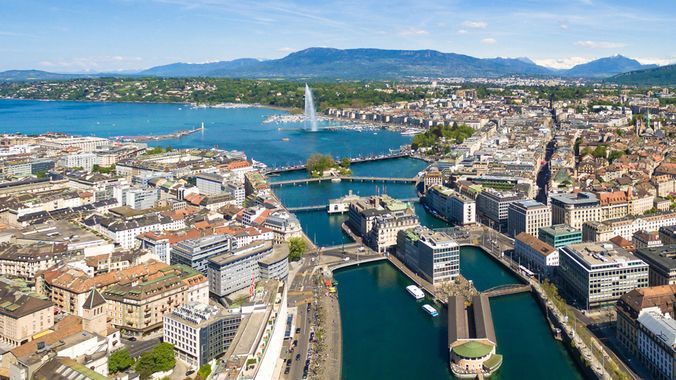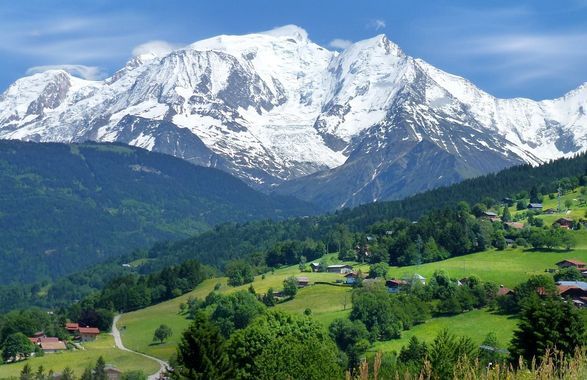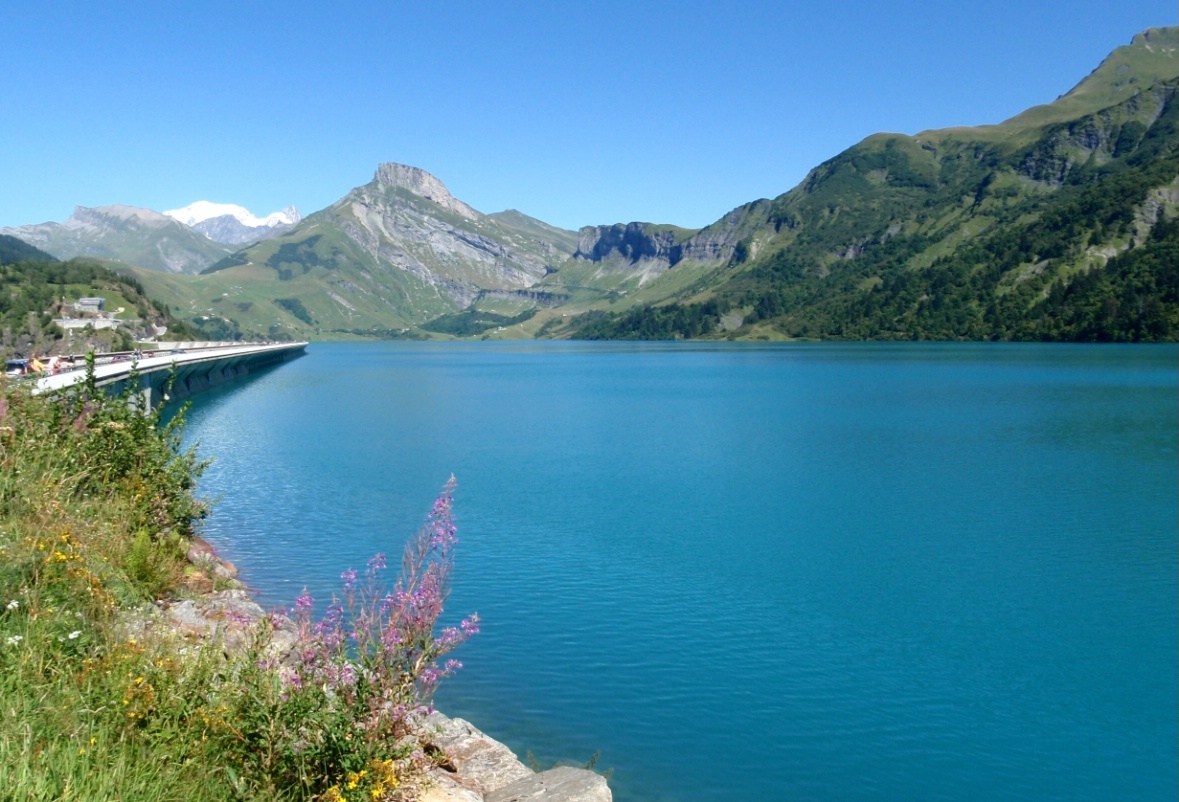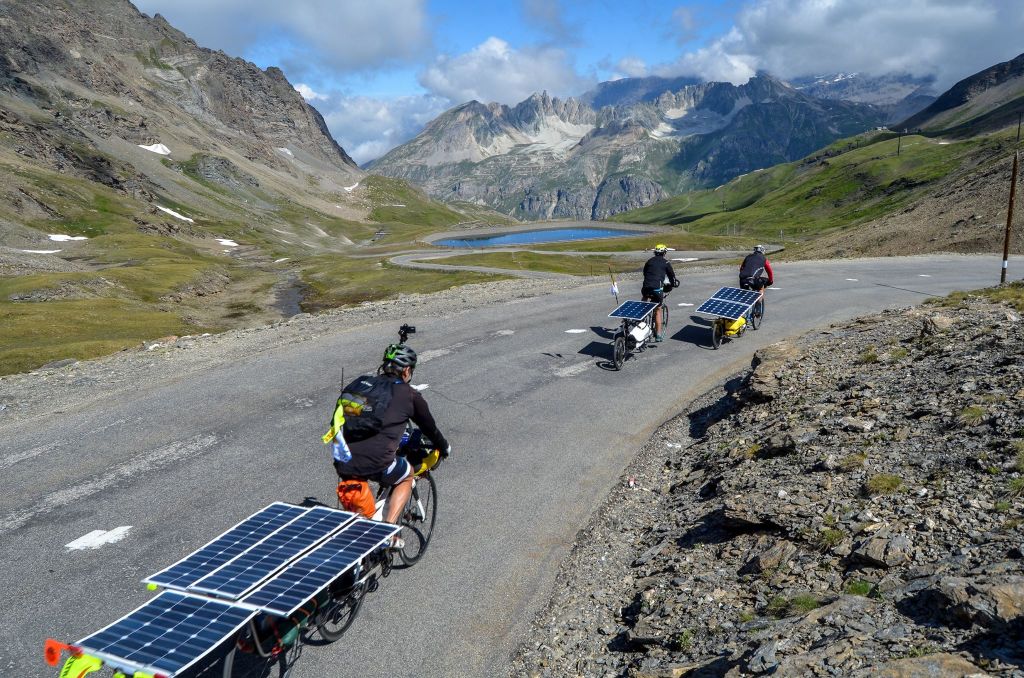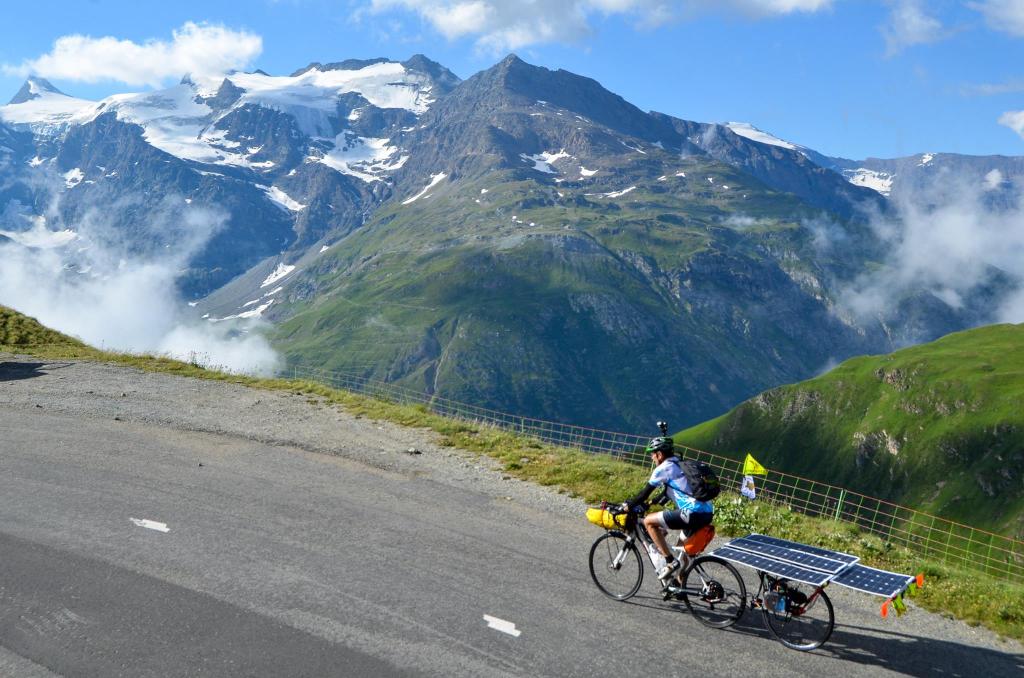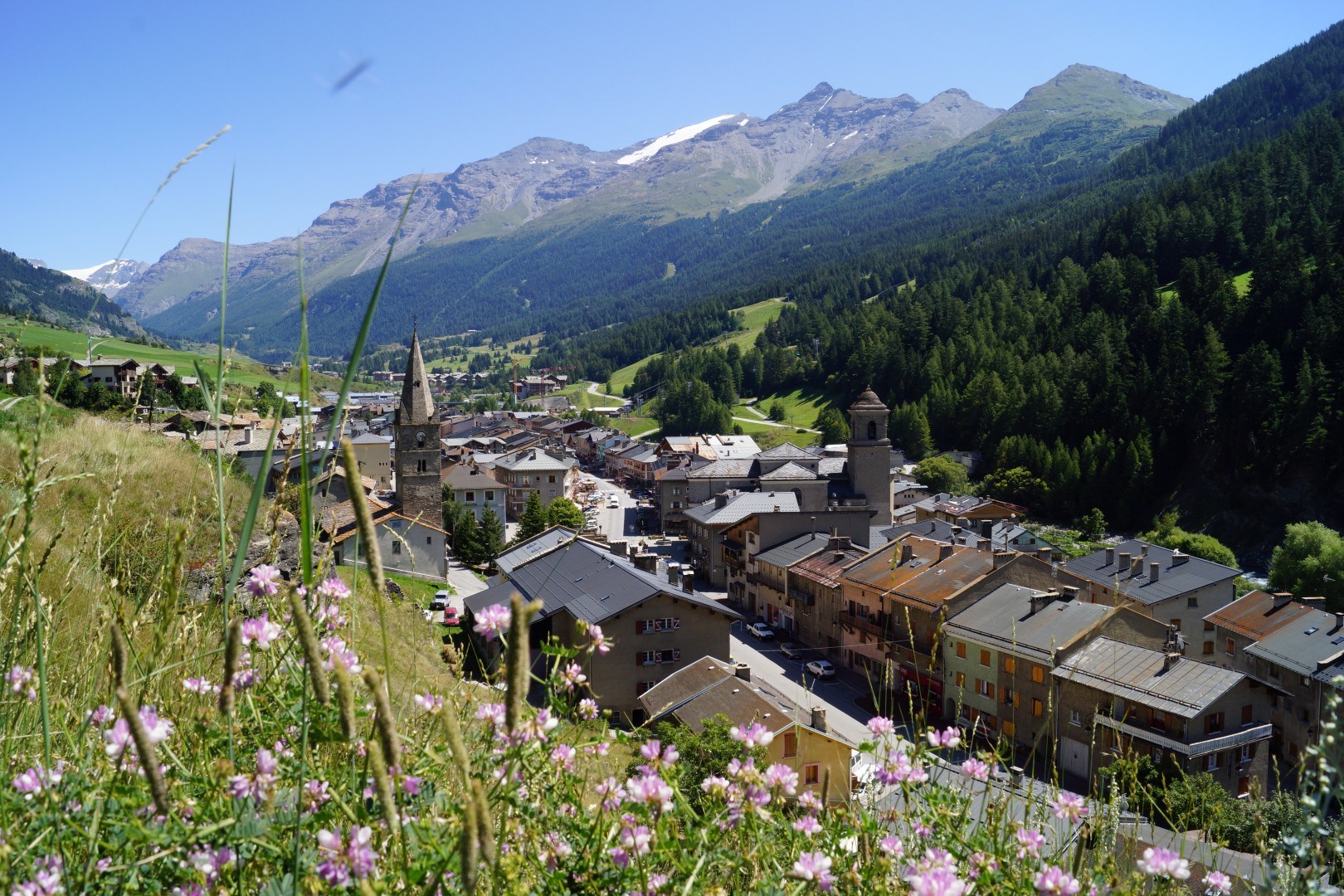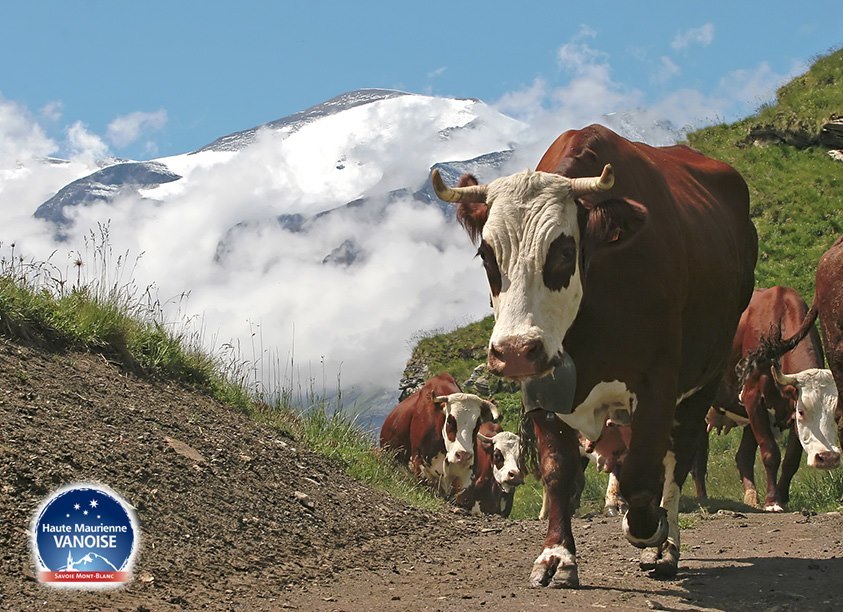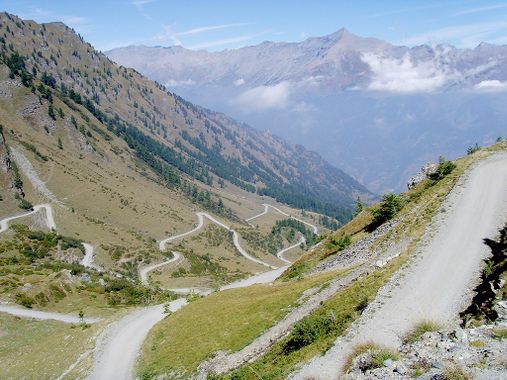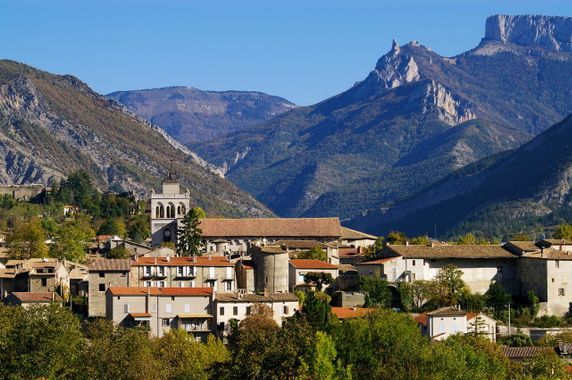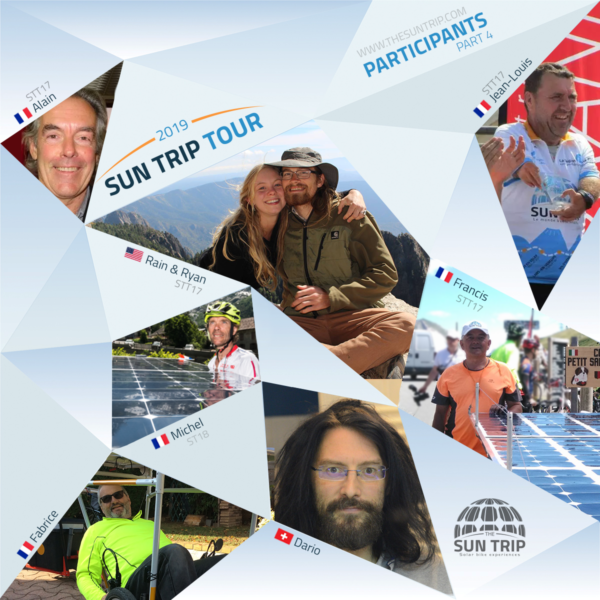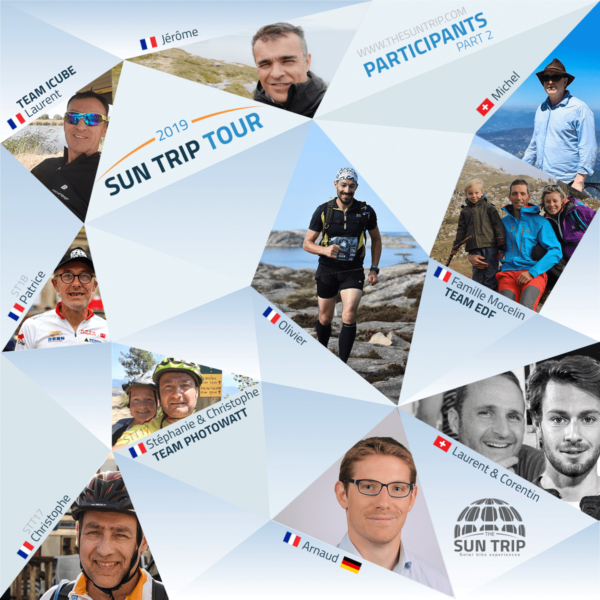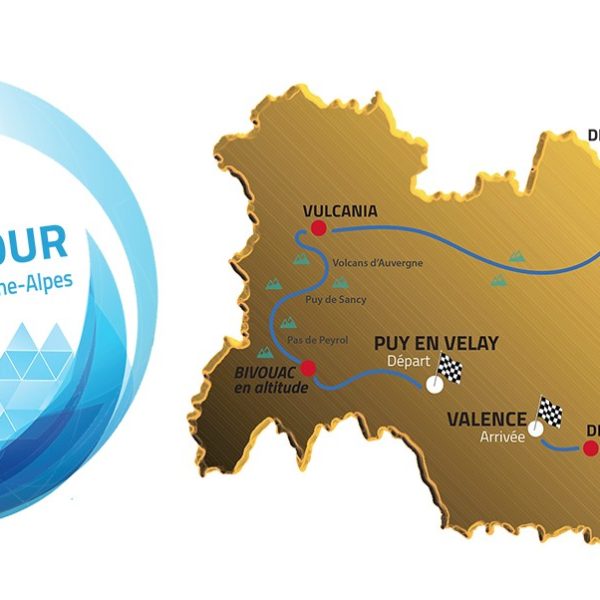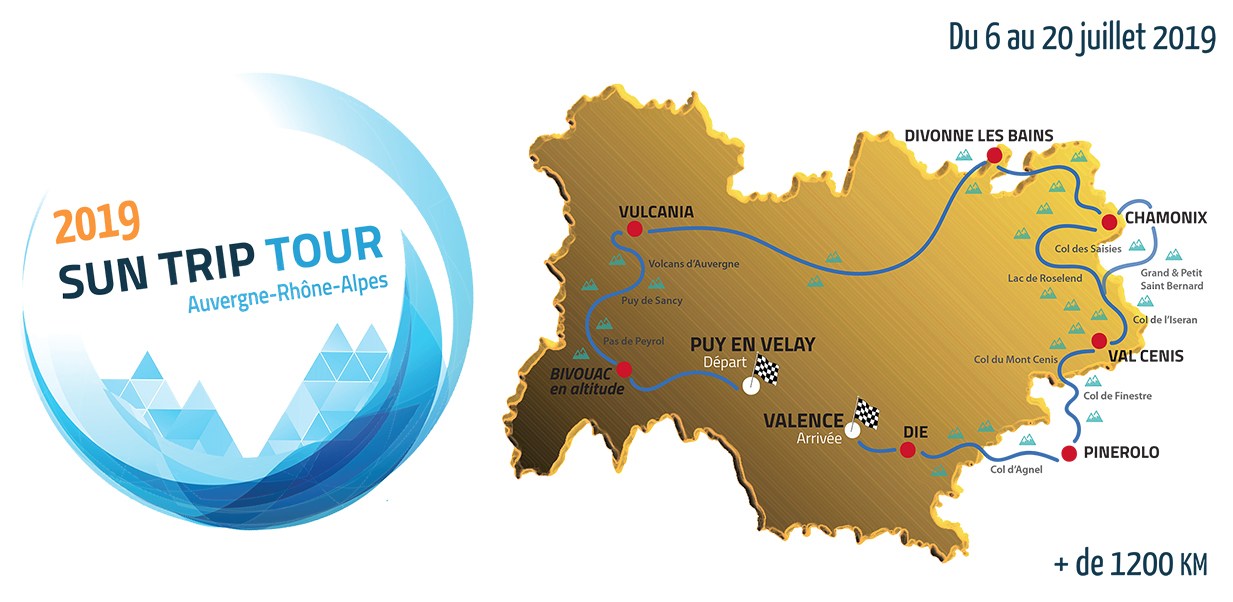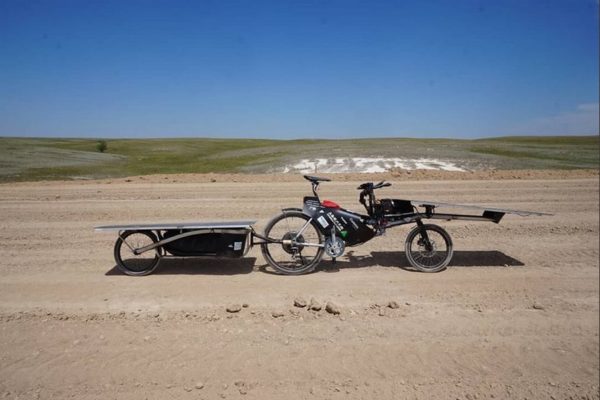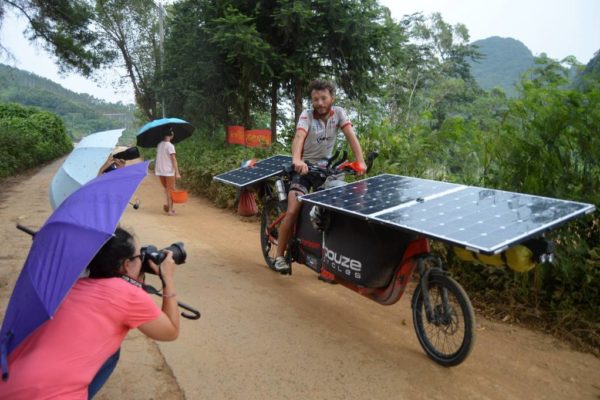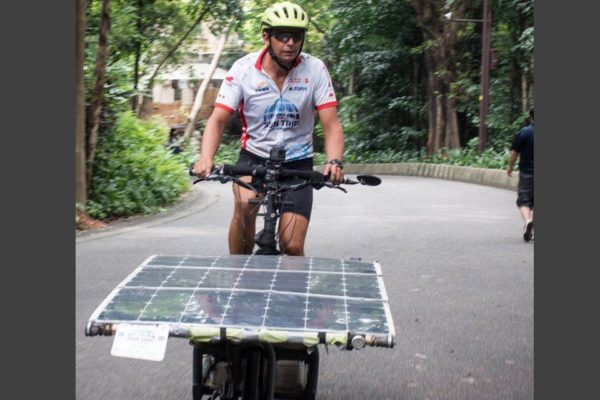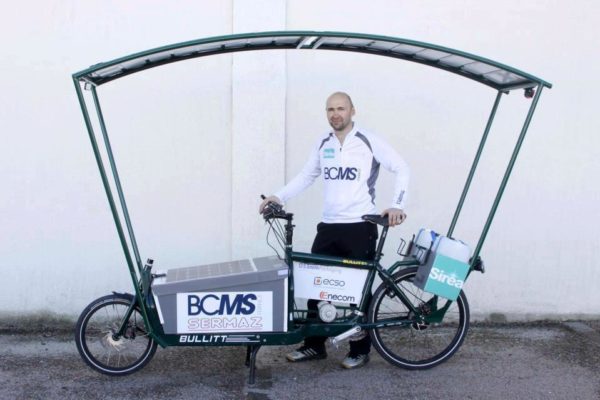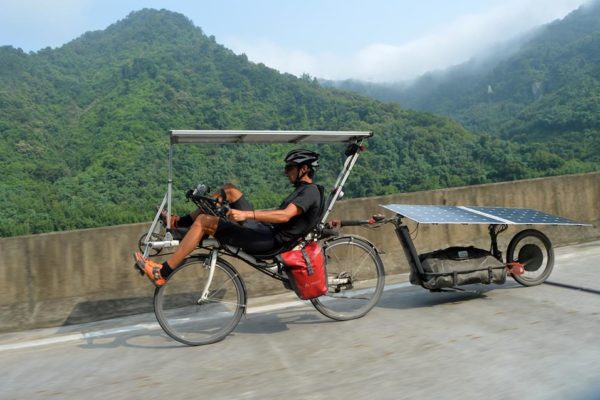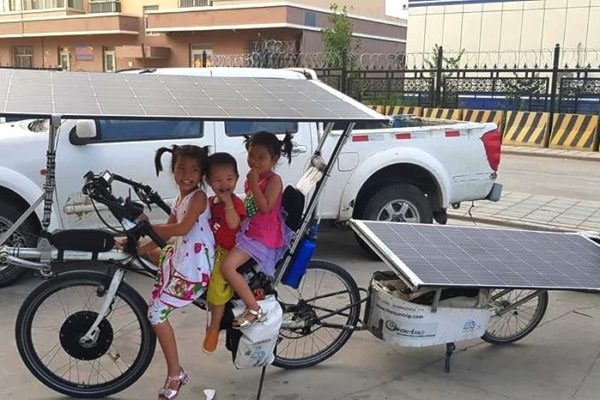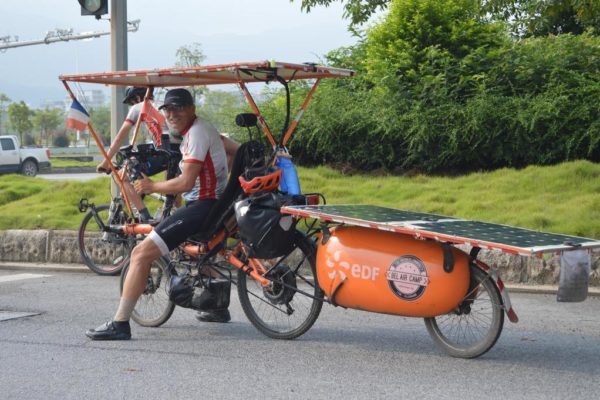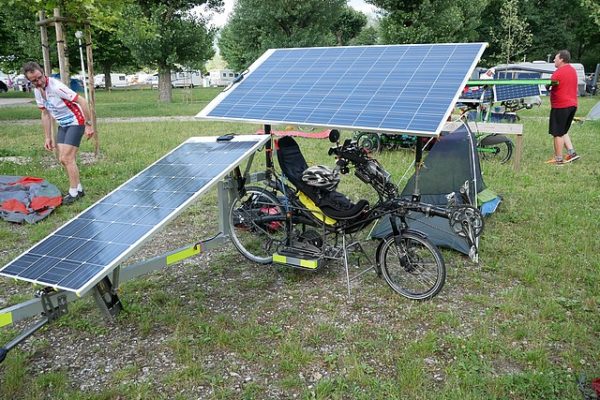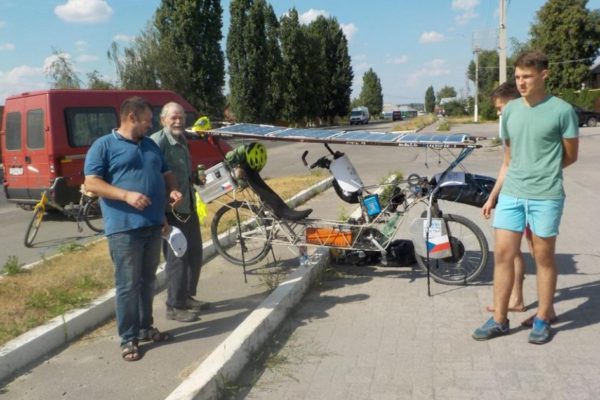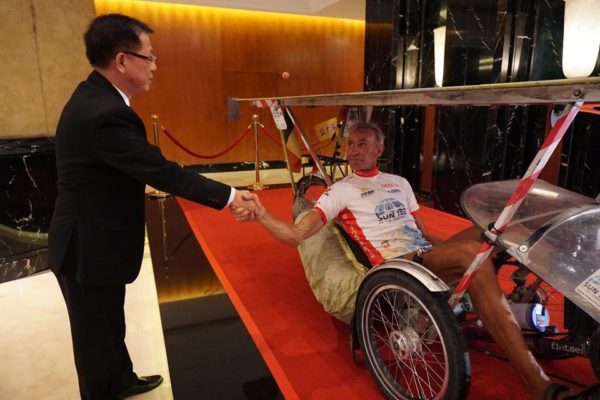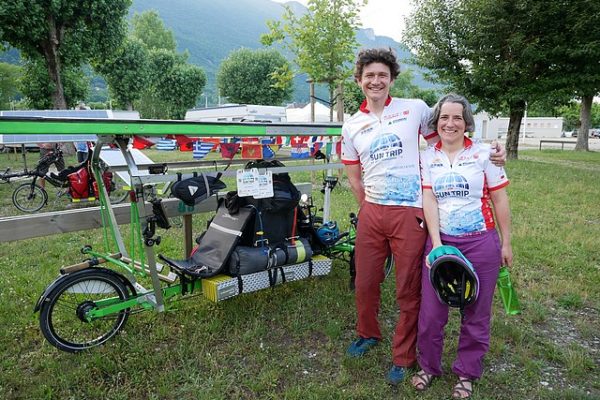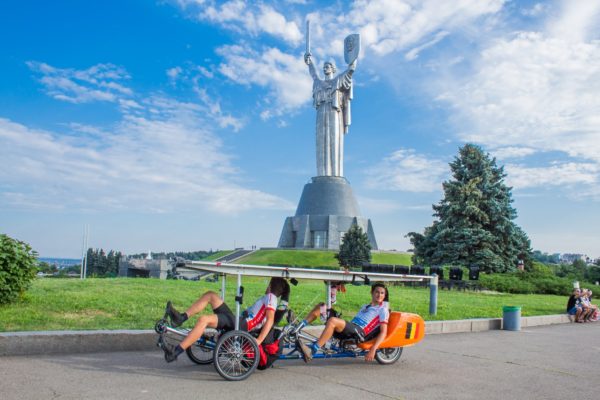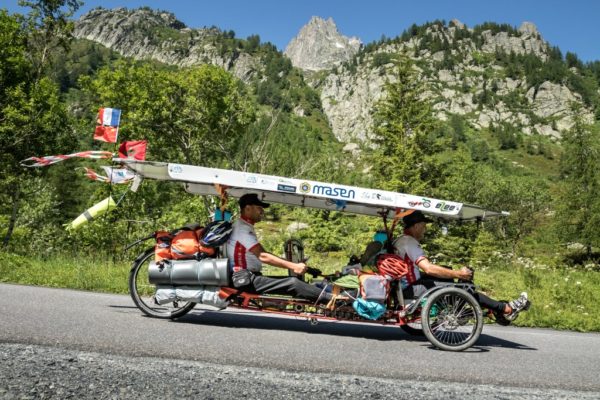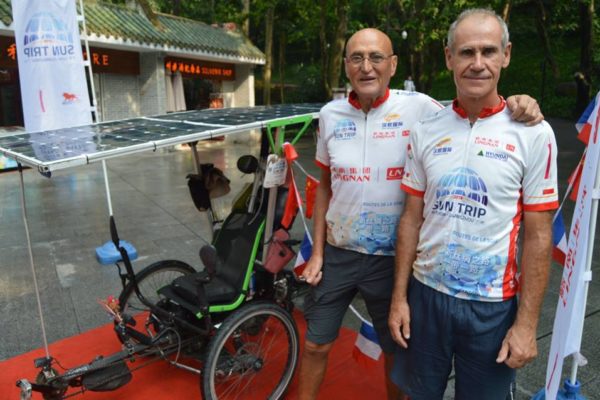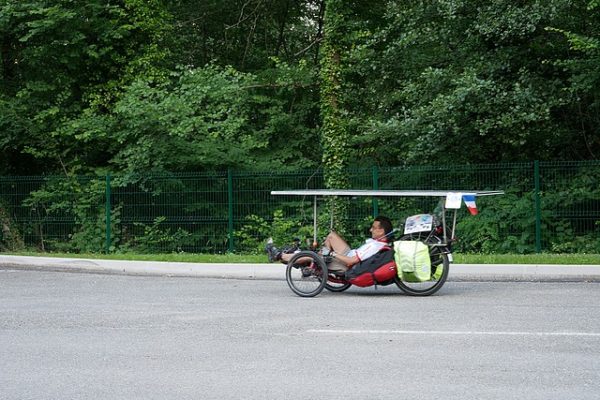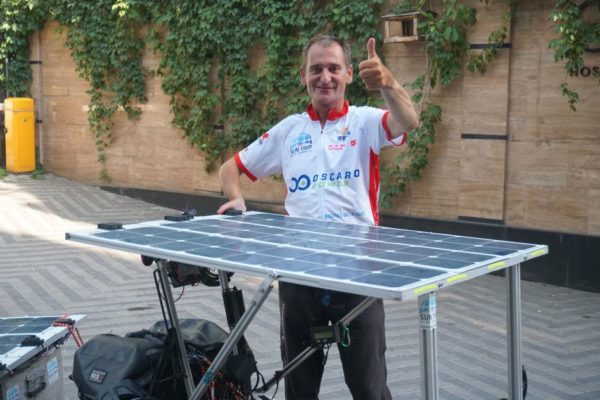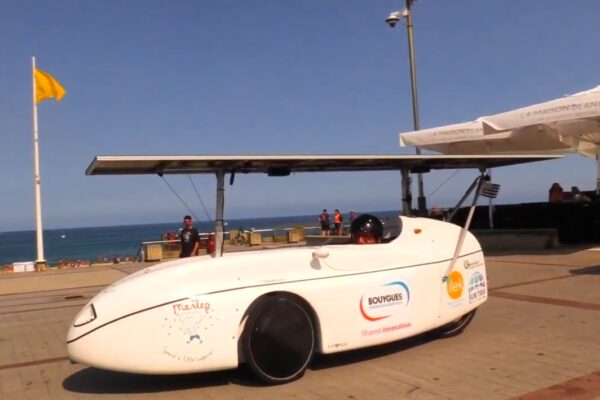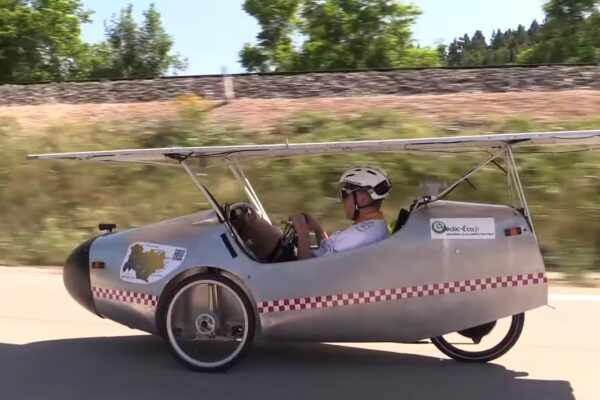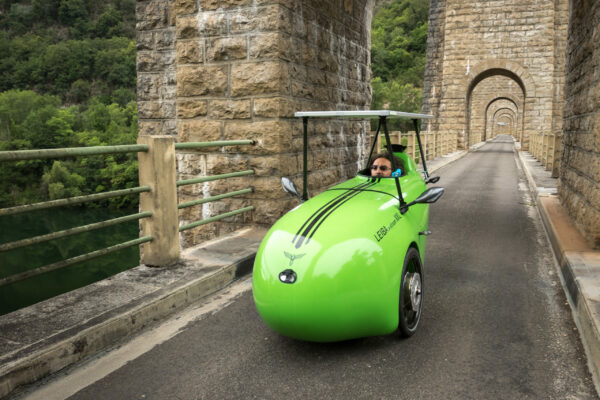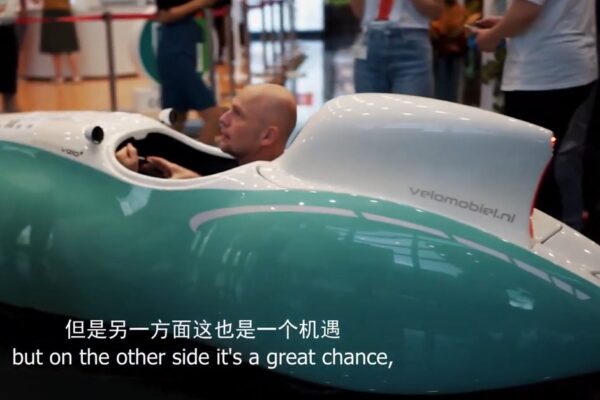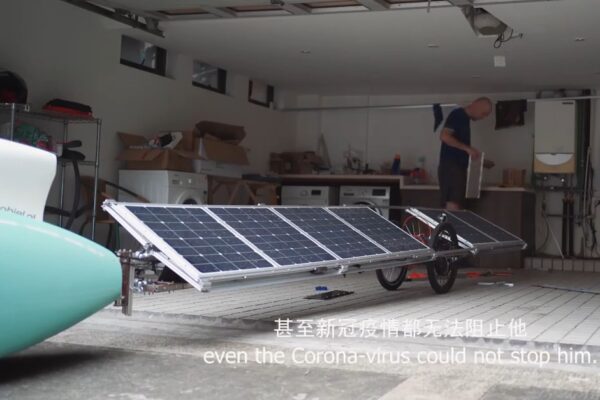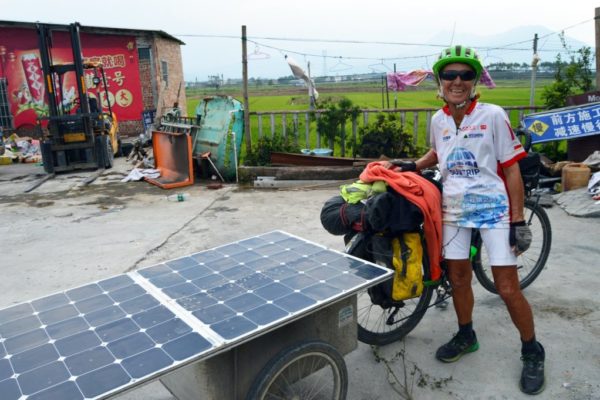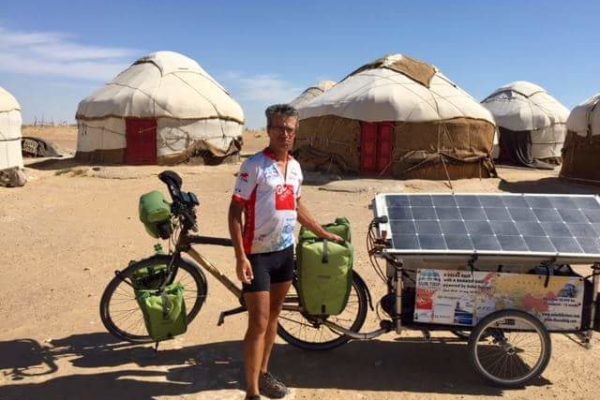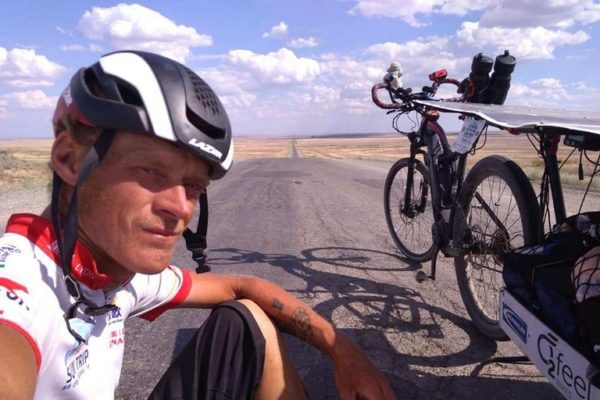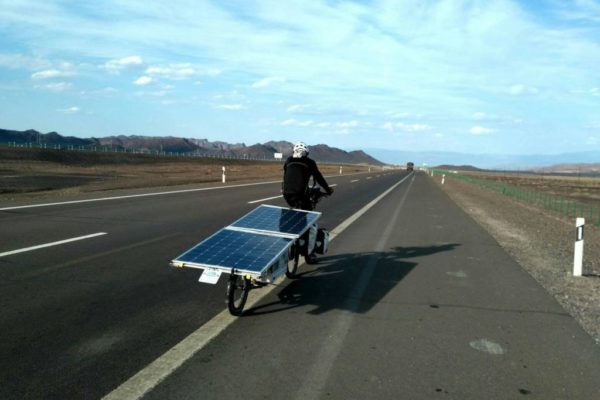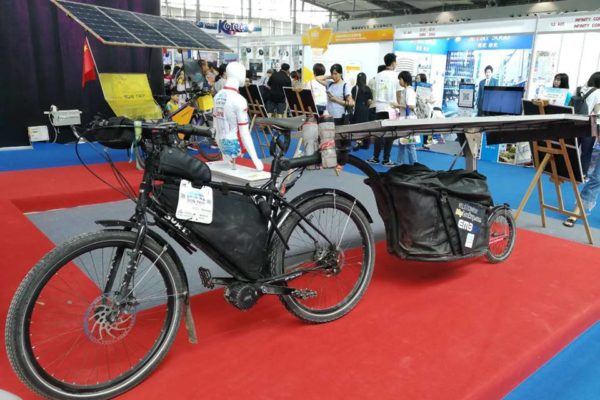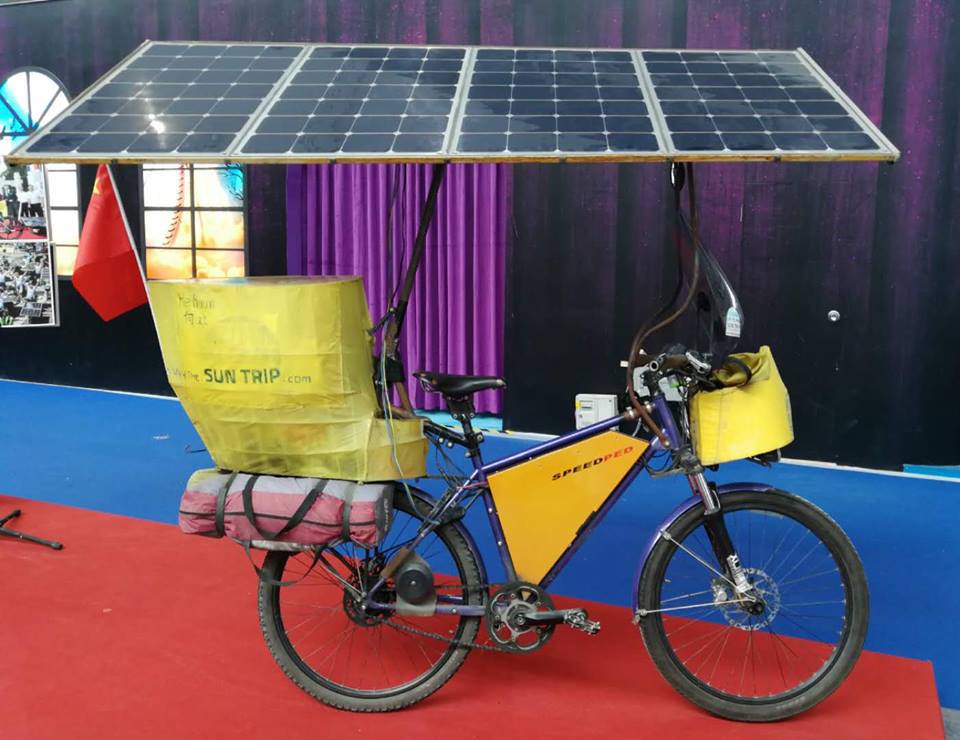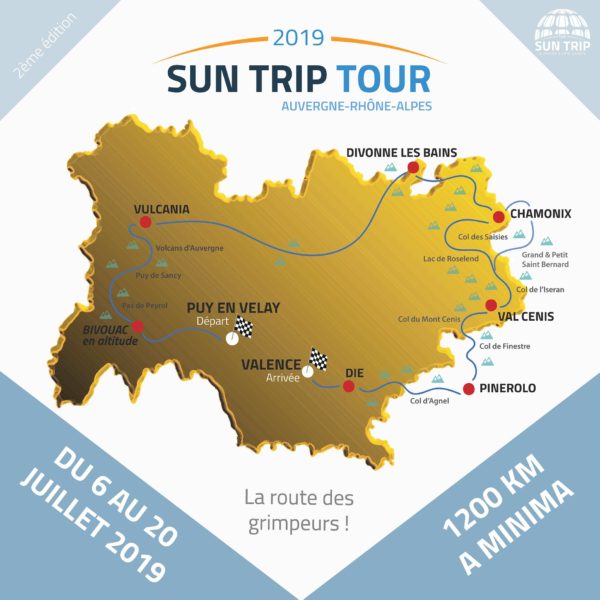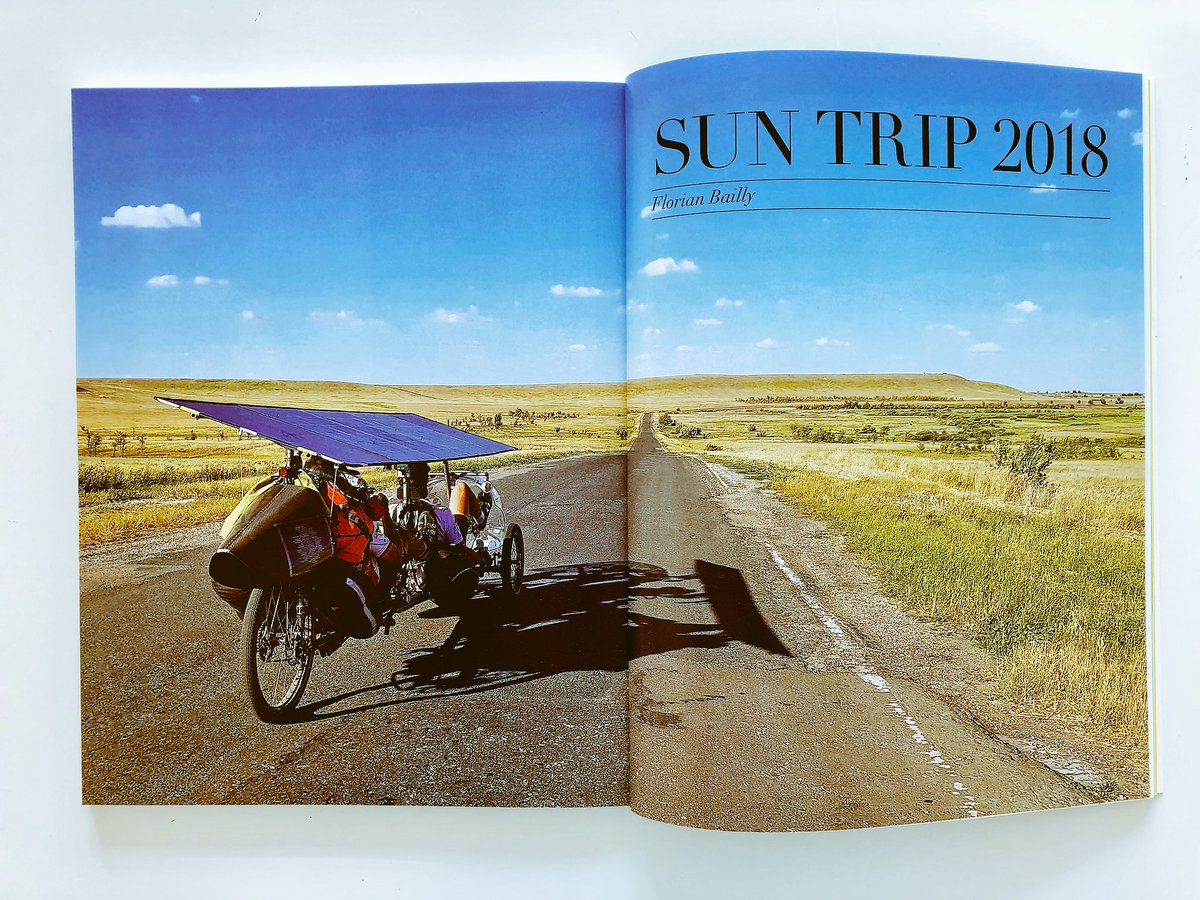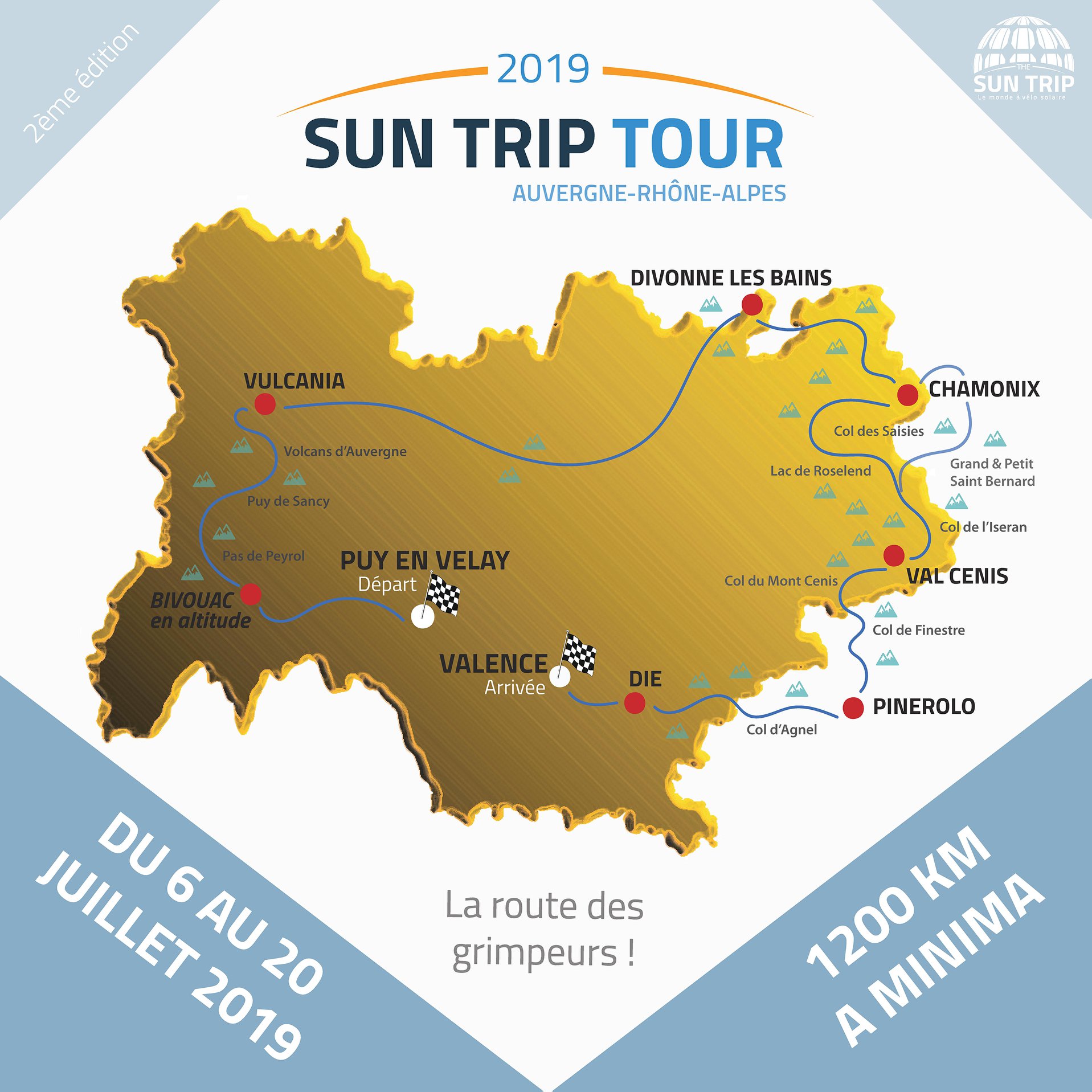From July 6th to 20th the course of the Sun Trip Tour 2019 consists of 8 stages, always the same principle of freedom of route between each point. The course stretches on 1200 to 1500 km according to the most probable routes, with positive gradients that could exceed the 35,000 meters for the most daring!
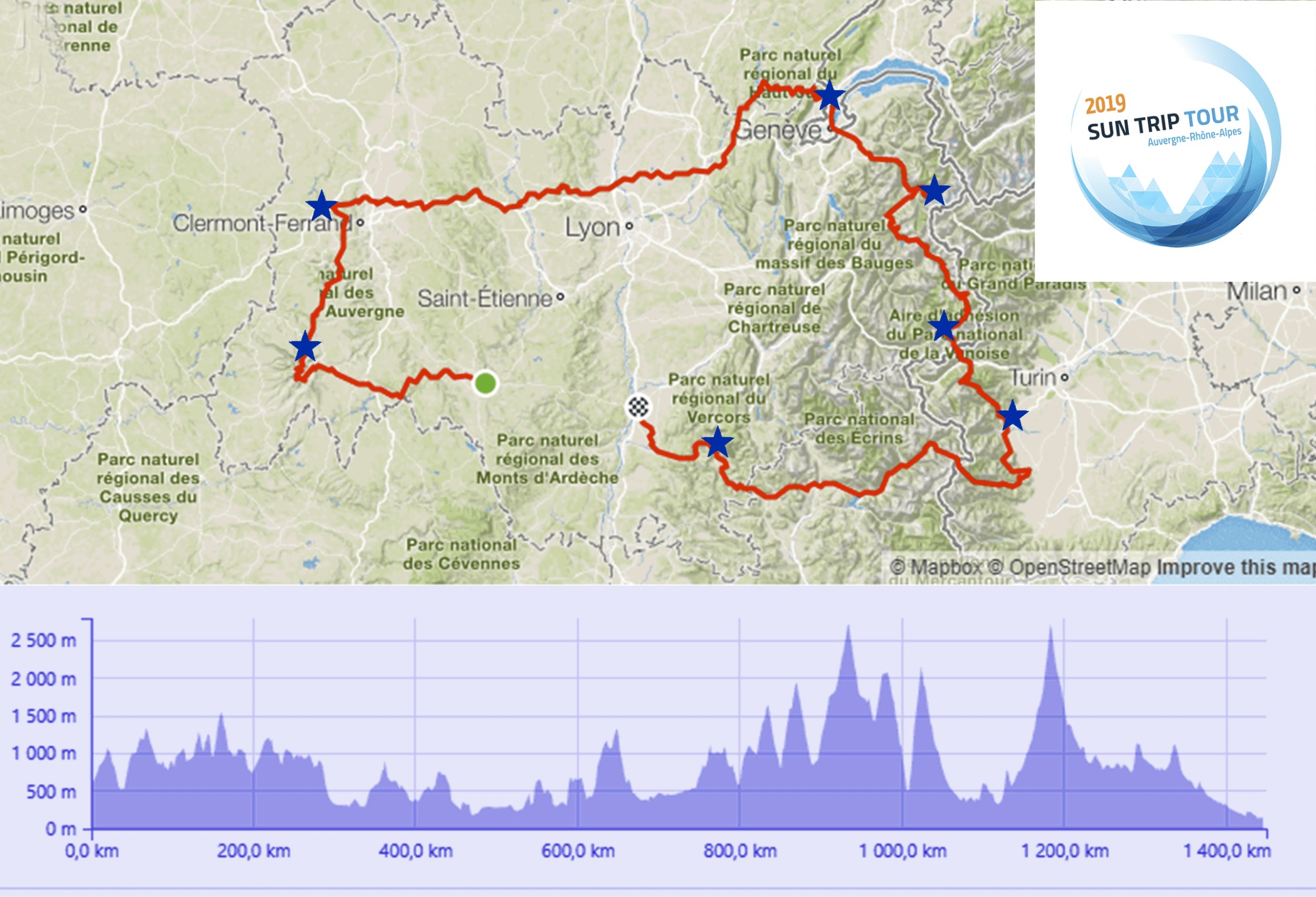
Step by step, this is the presentation of this solar tower of Auvergne-Rhône-Alpes:
Click on the images to enlarge them.
Stage 1: Le Puy en Velay – bivouac in the Monts d'auvergne (+/-175 km)
From 6 to 7 July This introductory stage proposes a smooth start of adventure through hilly areas, in often unsung landscapes. The end of the stage will however be more robust for everyone, because the bivouac in the wilderness will be positioned on the other side of the beautiful Puy Mary. The exact location will be presented later. Immediate displacement ensured with this dive in what the center of France has more beautiful.
Stage 2: Bivouac – Vulcania/Riom Limagne & Volcanoes (+/-100 km)
July 8th to 9th. The idea of this step is simple: propose a nearly complete ascent of the massif of the Monts d'auvergne! The participants playing the "challenge of the best climber" will find there a dream field to score big points, while those who want to avoid the mountains can shoot to the plain of Clermont-Ferrand. The 8 July accommodation will be held at Saint-Ours clear morning, but the real stage appointment will be well on the 9th of July in the morning on the site of Vulcania!
Stage 3: Vulcania – Divonne les Bains (+/-400 km)
On July 9th, from 10am until 3pm the Sun Trip Tour will be in contact with the public of Parc Vulcania. A time of exchange and promotion of new energies. The opportunity also for the participants to know all about the volcanic activity of the mountains of Auvergne. In the middle of the afternoon the platoon was soar for the longest stage of the edition, through the departments of the Puy-de-Dôme, the Loire, the Rhône and the Ain. Two and a half days of road for 400 km relatively flat, with however the incentive to cross the mountains of Jura just before diving on Divonne-les-Bains (checkpoint at the viaduct of Cize-Bolozon).
Stage 4: Divonne les Bains – Chamonix (+/-110 km)
On 12 July and after a musical bivouac on the shores of Lake Divonne, the Solar bicycle platoon will make a stopover in Switzerland, in the centre of Geneva. The opportunity to promote the Swiss teams involved and to talk about the Sun Trip in a country passionate about solar projects (solar Impulse, solar Planet, Solar Stratos…). The return to France will be through the Green lane connecting the town of Annemasse, then the participants will have the opportunity to complicate or not the task by going up the White Valley to Chamonix.
Stage 5: Chamonix – Val Cenis (from 200 to 250 km)
July 13th to 14th. Certainly the key step for the climbers, through the mountains of Savoy Mont Blanc (Ascent of Megève, col des seizures, Cormet of Roselend, etc…). The real starting point of the Sun trip 2018 to China, Chamonix will be for the adventurers of the Sun trip Tour 2019 The real starting place of the Alpine crossing. Some might also opt for a detour by Switzerland and Italy, taking the passes of the Grand and Petit-Saint Bernard, before joining the summit of the Alps on the Col de Iseran, at 2770 m altitude! It should be noted that those who want to save their strength can opt for the Albertville plain and the Maurienne Valley.
Break Day in Haute-Maurienne Vanoise
On 15 July the participants will be able to enjoy the grandiose landscapes of Haute-Maurienne, welcomed at the Gîte Ethic CIS stages of Val Cenis. This time of relaxation will be the occasion of planned animations with our partners. Also the opportunity for possible stragglers to join the group.
Stage 6: Val Cenis – Pinerolo (+/-100 km)
A short but explosive stage, programmed on July 16! The start will be marked by a passage imposed at the Col du Mont-Cenis, at 2081 metres above sea level. A climb that should be approached in a grouped platoon, for the first time on a Sun Trip. Beyond the dam of the Lac du Mont-Cenis, the participants will descend to Suze in Italy, and from this point the most courageous can try to climb the terrible Col de Finest, whose last 10 km are not paved. Pinerolo will be the only real step outside of France, a city that has already hosted the Tour de France and that receives the tour of Italy in May 2019. The meal will be held at the boulodrome of the Veloce Club and the night in the convent of the Sisters of the Visitation Santa Maria.
Step 7: Pinerolo – Die (from 350 to 450 km)
From 17 to 19 July, this stage is certainly the least predictable of adventure. The return to France can be done either by the very difficult Col Agnel (2744 m!), or by the "Sestriere – Col de Montgenèvre" web. The Massif of the Ecrins will then be bypassed by the south (more likely) or by the north, while some might have the idea of firing to the National Park of the provençales. Opportunities to go scratching points and visit breathtaking scenery will not fail! One thing is certain, coming to Die the difficulties will be passed.
Stage 8: Die – Valencia (70 km)
A day of parade to close the loop, Saturday, July 20, 2019. The adventurers will be happy to find the plain and will be welcomed in the city centre of Valencia, capital of the Department of Drôme, a city at the crossroads of several major cycling routes in the region Auvergne-Rhône-Alpes.
A communication shot around the concept of solar bike and the Sun Trip will turn its gaze towards China, in view of the 2020 edition!
Views: 131
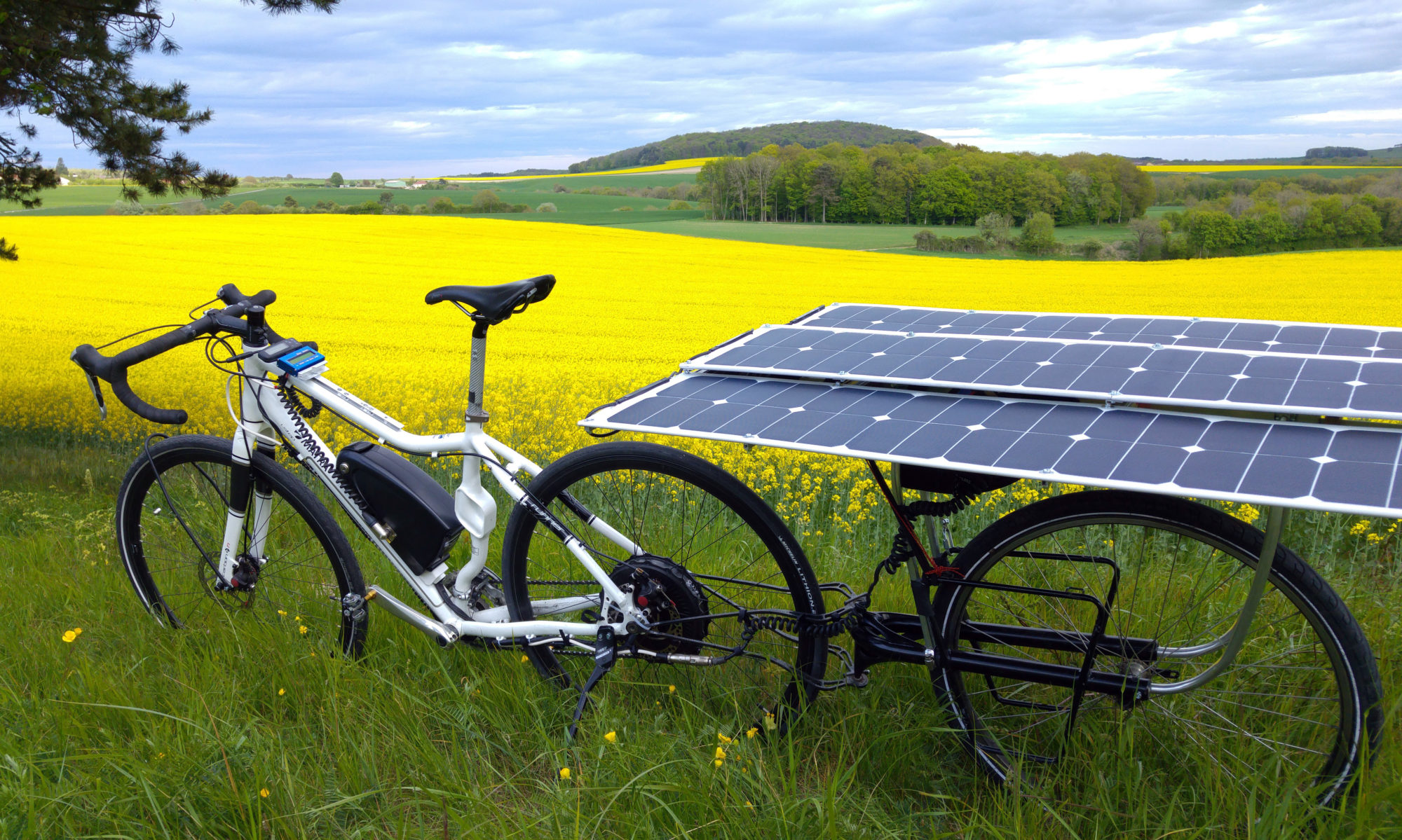

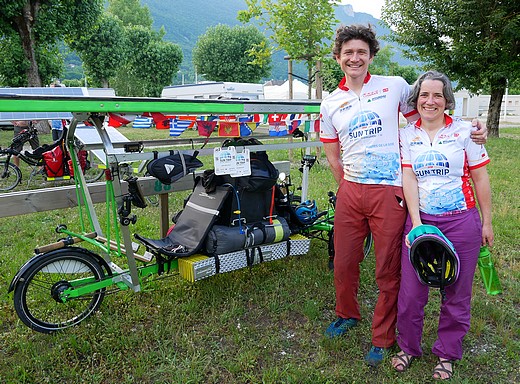
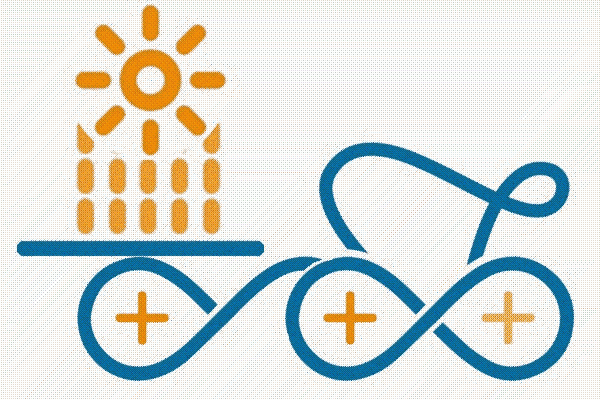
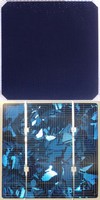 When I first searched for panels, I read that the yield of this monocrystalline silicon cell was 15%, another 20% and some 22% (in 2017). Today in 2019, the best reaches 25%. Unfortunately, this feature is often absent from the panel specifications.
When I first searched for panels, I read that the yield of this monocrystalline silicon cell was 15%, another 20% and some 22% (in 2017). Today in 2019, the best reaches 25%. Unfortunately, this feature is often absent from the panel specifications.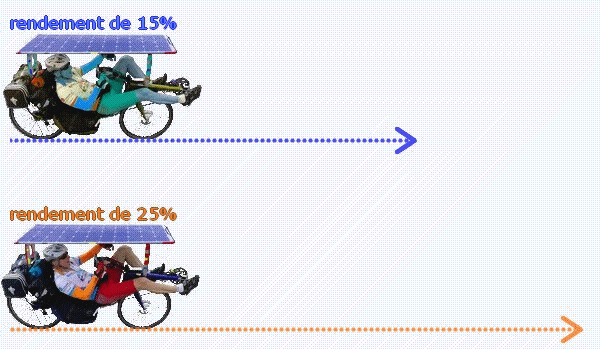
 The solar cyclist is therefore tempted to acquire the cells with “high efficiency”. And why not the best of the moment?
The solar cyclist is therefore tempted to acquire the cells with “high efficiency”. And why not the best of the moment?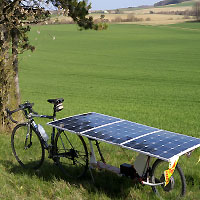 Photovoltaic panels are the key element of the solar bike: they convert the energy of the sun into electric energy that can be used directly by the engine and/or for charging the battery. When we start the adventure of building his solar bike, we are a little lost in front of the diversity of offers.
Photovoltaic panels are the key element of the solar bike: they convert the energy of the sun into electric energy that can be used directly by the engine and/or for charging the battery. When we start the adventure of building his solar bike, we are a little lost in front of the diversity of offers.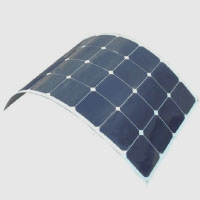 Flexible panels: this is the type of panel most frequently used for solar bikes. The reasons are their lightness (from 3 to 5 kg for 200W) and the good energy efficiency of the monocrystalline silicon cells that compose them (ratio between recovered electrical energy/solar energy received). More often than not, a supporting structure of the panels is added that rigidifies and protects them. In fact, every shock on a cell decreases its performance locally. With multiplied shocks, the total power of the panel decreases significantly and permanently. That is the weak point of flexibility.
Flexible panels: this is the type of panel most frequently used for solar bikes. The reasons are their lightness (from 3 to 5 kg for 200W) and the good energy efficiency of the monocrystalline silicon cells that compose them (ratio between recovered electrical energy/solar energy received). More often than not, a supporting structure of the panels is added that rigidifies and protects them. In fact, every shock on a cell decreases its performance locally. With multiplied shocks, the total power of the panel decreases significantly and permanently. That is the weak point of flexibility.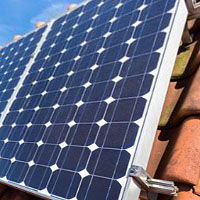 Rigid panels: t
Rigid panels: t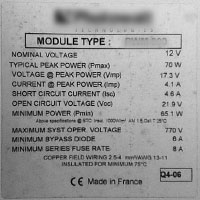 The electrical characteristics are mentioned by the manufacturers. The main features are the operating voltage (VMP in volts) and the maximum current in the event of maximum sunlight (IMP in AMPS). Depending on the Assembly of the cells, in series and/or parallel, panels of the same power may have different operating voltages and maximum currents.
The electrical characteristics are mentioned by the manufacturers. The main features are the operating voltage (VMP in volts) and the maximum current in the event of maximum sunlight (IMP in AMPS). Depending on the Assembly of the cells, in series and/or parallel, panels of the same power may have different operating voltages and maximum currents.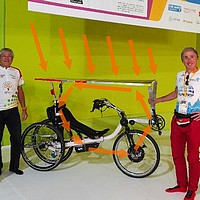 The designer of a solar bike is therefore faced with an equation with many parameters influencing each other:
The designer of a solar bike is therefore faced with an equation with many parameters influencing each other: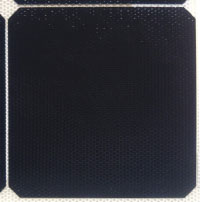 Monocrystalline silicon cells
Monocrystalline silicon cells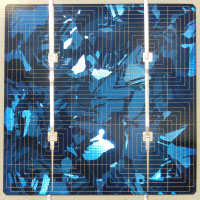 Polycrystalline silicon cells
Polycrystalline silicon cells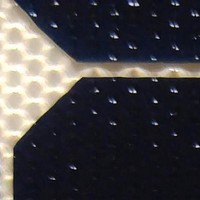 “class A” cells: they are of very good quality, without visible defect and their electrical characteristics correspond exactly to the specifications defined by the manufacturer. The solar panels built with this cell class are therefore the most expensive.
“class A” cells: they are of very good quality, without visible defect and their electrical characteristics correspond exactly to the specifications defined by the manufacturer. The solar panels built with this cell class are therefore the most expensive. “class B” cells: they are of good quality and have little visible defects. Their yield is close to or slightly lower than the “class A” cells.
“class B” cells: they are of good quality and have little visible defects. Their yield is close to or slightly lower than the “class A” cells. “class C” cells: they show visible defects that affect their performance (e.g. chipped, cracked cells…). Their performance is obviously less good, these cells are used to realize the economic signs.
“class C” cells: they show visible defects that affect their performance (e.g. chipped, cracked cells…). Their performance is obviously less good, these cells are used to realize the economic signs.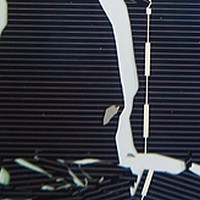 “class D” cells: they present breaks or are incomplete. They can be resized to produce in smaller sizes, but most often their material is recycled to make new ones.
“class D” cells: they present breaks or are incomplete. They can be resized to produce in smaller sizes, but most often their material is recycled to make new ones.